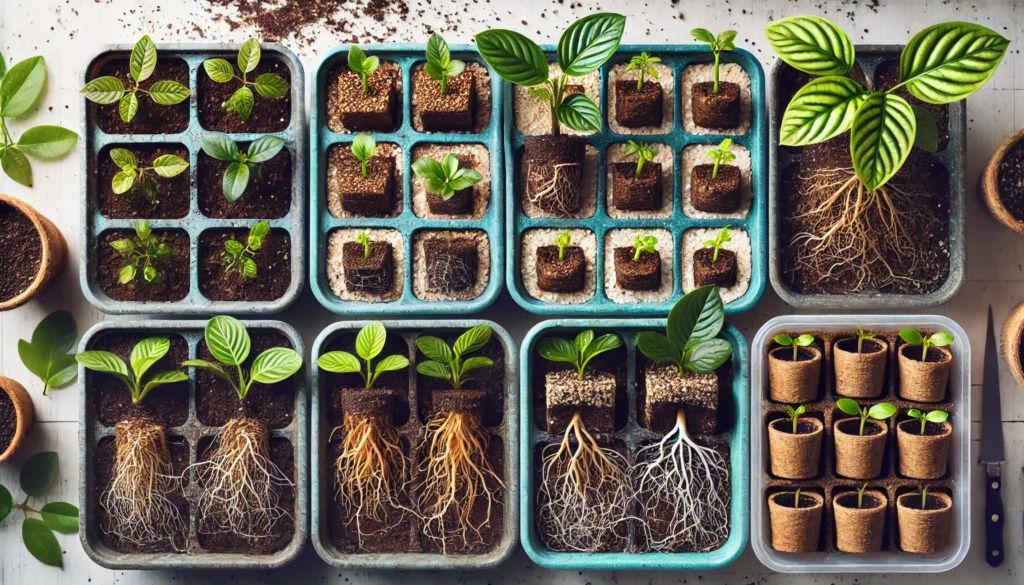
Best Medium for Rooting Cuttings: Top Choices for Successful Plant Propagation
Choosing the best medium for rooting cuttings is one of the most crucial factors in ensuring successful plant propagation. Whether you’re a beginner or an experienced gardener, selecting the right rooting medium can make all the difference in how quickly and effectively your cuttings develop roots. In this article, we’ll explore the top mediums that promote strong root growth, from classic soil options to innovative alternatives like perlite and coconut coir. Ready to boost your propagation success? Let’s dive into the best choices for rooting cuttings and get your plants thriving in no time!
Table of Contents
ToggleUnderstanding Rooting Cuttings
Rooting cuttings is a popular and effective method for propagating plants. It involves taking a part of a plant, usually a stem or leaf, and encouraging it to grow roots, creating a new plant. This process is cost-effective and allows gardeners to clone their favorite plants, ensuring consistent traits across generations.
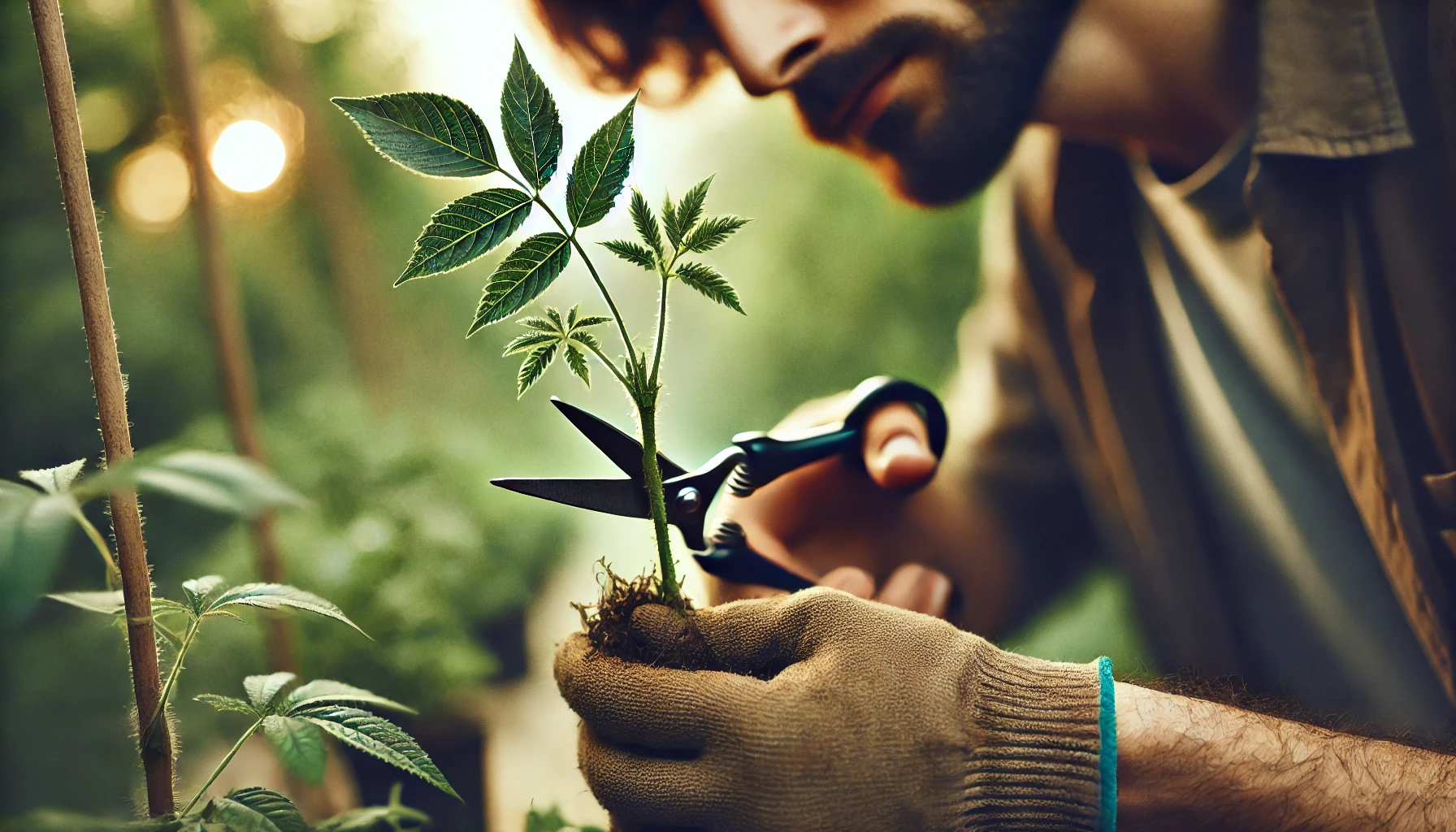
Why Rooting Cuttings Works:
When you cut a piece of a plant and provide the right conditions, it can naturally form roots and begin to grow into a mature plant. The cutting has the same genetic material as the parent plant, so it will replicate its characteristics, such as flower color, size, and growth habits.
Types of Cuttings for Rooting:
- Stem Cuttings: These are the most common and involve cutting a portion of the stem. Some plants, like roses and geraniums, root well from stem cuttings.
- Leaf Cuttings: In some plants, such as succulents or begonias, leaf cuttings can be used. These cuttings form roots from the leaf itself.
- Root Cuttings: Less common, but effective for plants like raspberries and horseradish. These involve cutting a part of the root and planting it to grow a new plant.
Key Factors for Successful Rooting:
- Clean Tools: Always use sharp, clean scissors or pruning shears to prevent disease spread.
- Hormones: Some cuttings benefit from rooting hormone, which speeds up the process and encourages better root formation.
- Moisture: Keep the cutting moist but not waterlogged to prevent rot. A humidity dome or plastic bag can help maintain moisture levels.
- Light and Temperature: Most cuttings root best in a warm, bright area, but indirect light is preferred to avoid stress or drying out.
Understanding the basics of rooting cuttings can give you the confidence to try this simple propagation method at home, ensuring you grow healthy, strong plants with ease.
Key Characteristics of a Good Rooting Medium
A good rooting medium is crucial for the successful propagation of plants. Whether you’re starting from seeds or cuttings, the right medium helps promote healthy root development. Here are the key characteristics to look for when choosing a rooting medium:
1. Good Drainage
A good rooting medium must drain excess water effectively. Too much moisture can lead to root rot, while insufficient water retention will dry out the roots. The ideal medium retains just enough moisture to keep the roots hydrated while allowing for proper drainage.
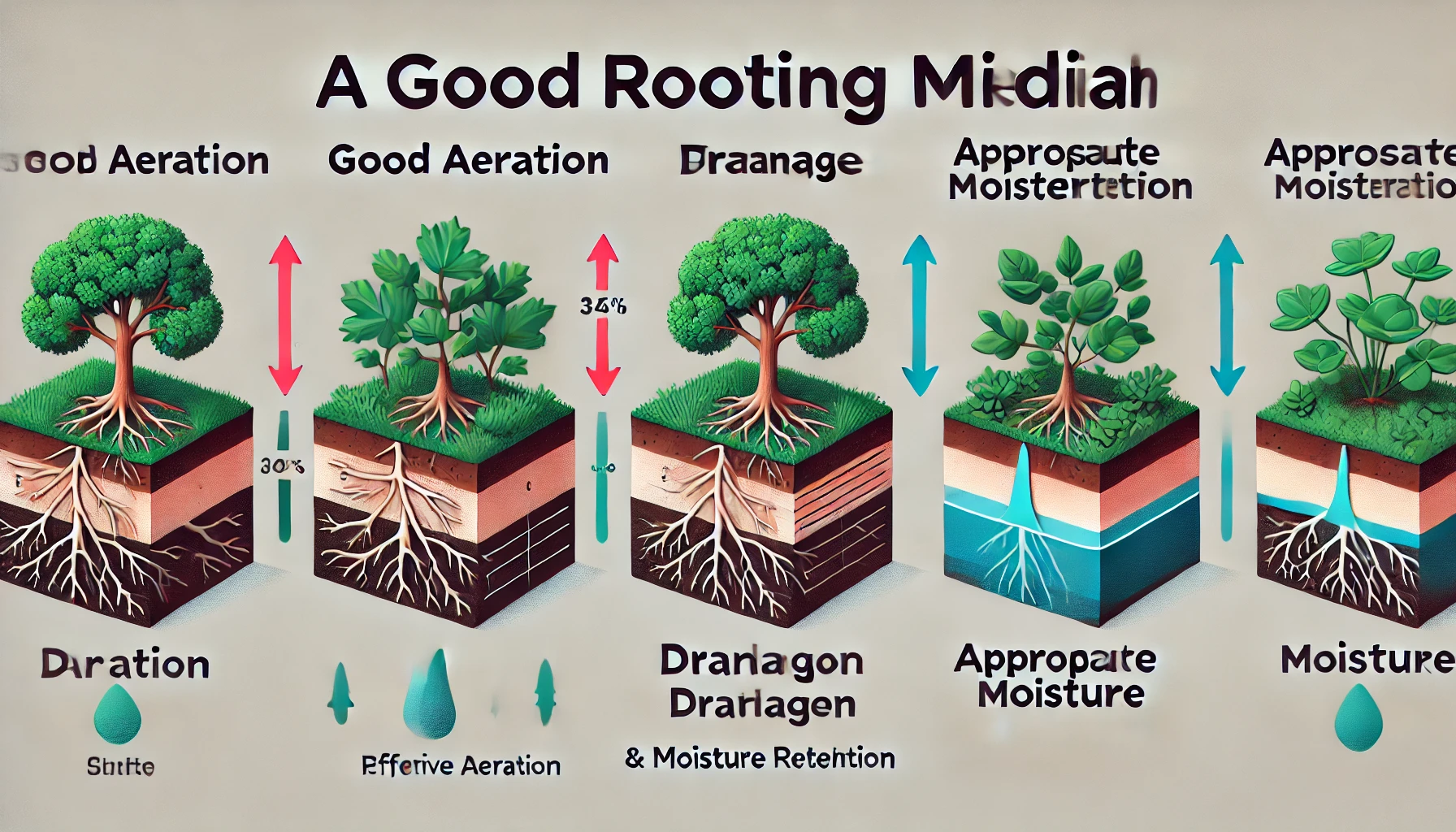
2. Aeration
Roots need oxygen to grow properly. A medium that provides good aeration ensures that the roots receive enough air. Materials like perlite, vermiculite, and coarse sand are excellent for improving aeration in the mix.
3. Sterility
A clean, sterile rooting medium reduces the risk of diseases and pests, which can quickly harm young plants. Use sterile potting mixes or ensure the medium is free from pathogens by sterilizing it before use.
4. Lightweight
A lightweight rooting medium makes it easier to handle and helps roots grow without being obstructed by heavy, compact materials. It also prevents the plant from becoming top-heavy and promotes a stable root structure.
5. Nutrient-Rich
While the primary purpose of a rooting medium is to support the development of roots, a slight supply of nutrients will encourage healthy growth. A well-balanced medium can provide the necessary nutrients without overwhelming young plants.
6. pH Level
The pH level of the medium affects nutrient availability. Aim for a neutral to slightly acidic pH (around 6.0 to 7.0), which is ideal for most plants. Regularly check and adjust the pH if necessary to ensure optimal root development.
By selecting a medium with these characteristics, you’ll provide the best foundation for your plant’s growth, ensuring strong, healthy roots and a successful propagation process.
Best Mediums for Rooting Cuttings
When it comes to rooting cuttings, choosing the right medium is crucial for successful root development. The ideal rooting medium provides the right balance of moisture, aeration, and nutrients while supporting the cutting’s growth. Here are some of the best mediums for rooting plant cuttings:
1. Perlite
Perlite is a lightweight, porous material that enhances drainage and aeration. Its excellent moisture retention properties make it a popular choice for rooting cuttings. It allows oxygen to reach the roots, preventing rot and promoting healthy growth.

2. Coconut Coir
Coconut coir is a sustainable alternative to peat moss and is highly effective for rooting cuttings. It holds moisture well and offers great air circulation for the roots. Coir is pH-neutral, making it suitable for a wide range of plants.
3. Peat Moss
Peat moss is an organic material that retains moisture and provides a slightly acidic environment ideal for many plants. When combined with perlite or vermiculite, it creates a balanced medium that supports fast root development.
4. Vermiculite
Vermiculite is a mineral-based medium that helps with moisture retention and root aeration. It’s a great option for cuttings that require consistent moisture levels and is often used in combination with other mediums like perlite for optimal results.
5. Sand
For those growing hardy plants or succulents, a coarse sand mixture can provide a well-draining medium that prevents waterlogging. Sand is often combined with other ingredients like perlite for better moisture control.
6. Potting Mix
A high-quality potting mix can also work well for rooting cuttings, especially if it contains added organic matter like compost. However, it’s important to ensure the mix has good drainage, which can be improved by adding perlite or sand.
Tips for Success:
- Always ensure the medium remains moist, but not waterlogged.
- Sterilize your medium before use to prevent disease and pests.
- Consider a propagation tray or container with drainage holes to prevent excess water accumulation.
Choosing the right rooting medium is key to giving your cuttings the best start. Experiment with different mediums to find what works best for your specific plant varieties.
How to Choose the Best Medium for Your Cuttings
Choosing the right medium for your cuttings is crucial to their success. The best medium provides a balance of moisture, air circulation, and nutrients, ensuring that your cuttings root efficiently. Here’s a breakdown of the top options:
Potting Soil Potting soil is a common choice due to its accessibility and versatility. Choose a lightweight, well-draining potting mix, preferably one labeled for seed starting or cuttings. A high-quality mix will keep your cuttings moist without becoming soggy, which helps prevent rot.
Perlite Perlite is a sterile, porous material that enhances drainage and promotes root growth. It’s often used in combination with potting soil or on its own for plants like succulents and cacti. Its excellent aeration ensures roots get enough oxygen, vital for healthy development.

Vermiculite Vermiculite retains moisture while offering good aeration. It’s especially useful for moisture-loving plants. This medium also holds nutrients well, which is great for cuttings that need a bit more feeding as they establish roots.
Sand Coarse sand is an excellent option for cuttings that require good drainage, such as woody plants. It helps to prevent waterlogging, allowing roots to develop without drowning. For best results, mix sand with other mediums like peat or perlite.
Coco Coir Coco coir is an eco-friendly, lightweight alternative to peat moss. It retains moisture effectively but drains well, providing an ideal environment for root growth. It’s especially useful for tropical plants or any cutting that needs consistent moisture.
Hydrogels For those who prefer a more modern solution, hydrogels can hold moisture while ensuring air circulation around roots. While more commonly used for larger scale operations, hydrogels can be beneficial for delicate cuttings.
Tips for Success:
- Choose a medium based on your plant’s needs: For succulents, go for sand or perlite; for tropical plants, coco coir or a mix of potting soil and vermiculite works best.
- Avoid overly rich mediums: Cuttings don’t require high-nutrient soil to start. Too many nutrients can stress the young roots.
- Maintain proper moisture levels: A well-draining medium helps prevent root rot but ensure it stays moist—not soaked.
Choosing the right medium is key to successful propagation. By understanding what your cuttings need, you can provide the best possible start for healthy, thriving plants.
Preparing the Medium for Rooting
When it comes to successful plant propagation, the medium you choose for rooting plays a crucial role. A well-prepared rooting medium provides the ideal environment for roots to develop, ensuring healthy growth for your cuttings or seedlings.
Choose the Right Medium
The best medium for rooting is one that’s lightweight, well-draining, and sterile. Common choices include perlite, vermiculite, coconut coir, or a mix of peat moss and perlite. These options allow roots to penetrate easily while maintaining adequate moisture and air circulation.
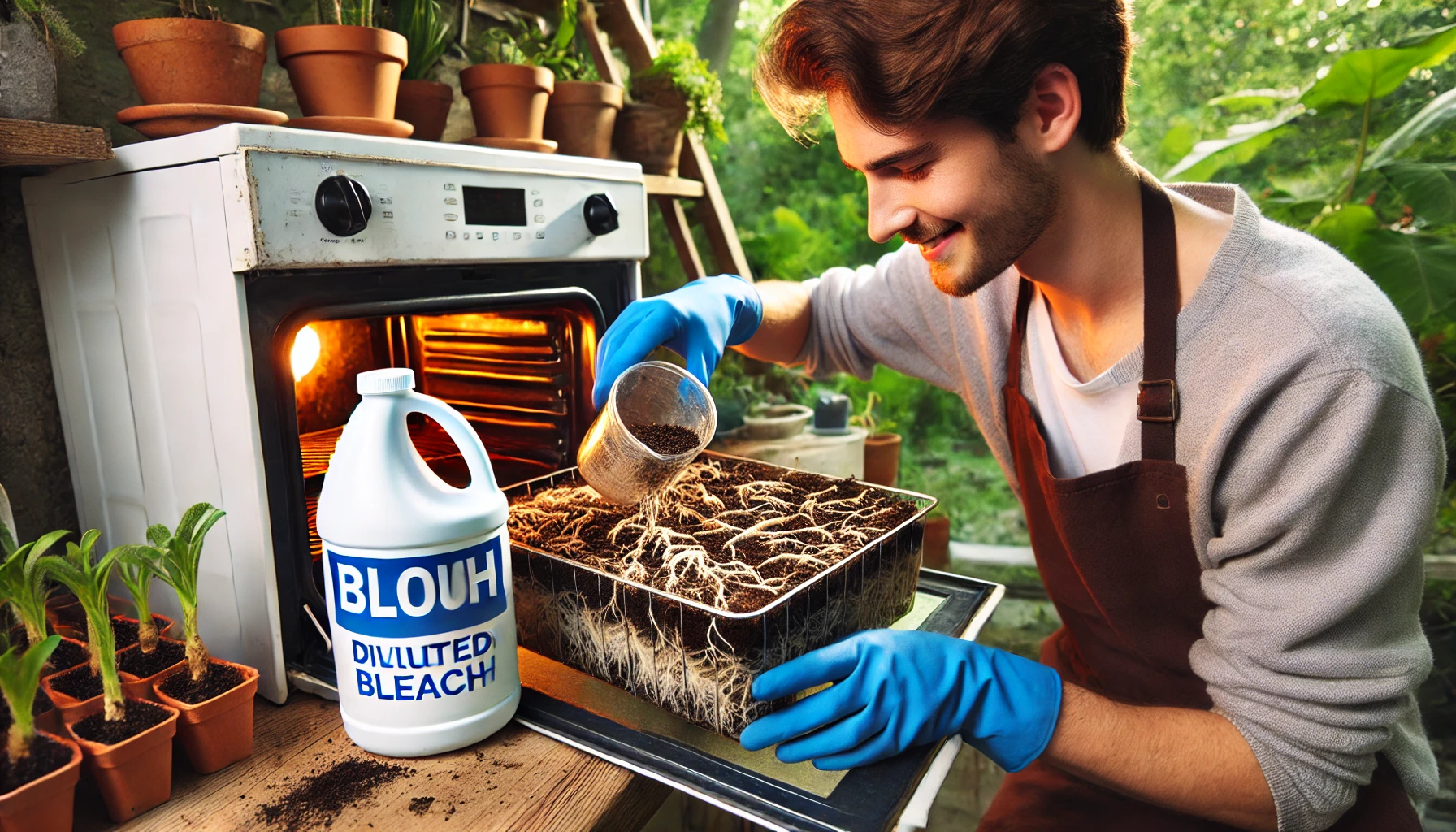
Sterilize the Medium
To prevent fungal infections or pests, always sterilize your medium before use. This can be done by heating the medium in the oven at 180°F for 30 minutes or soaking it in a diluted bleach solution (one part bleach to ten parts water). Sterilizing ensures a clean start for your cuttings.
Moisture Control
The rooting medium should be moist but not soaked. A good rule of thumb is to lightly moisten the medium until it’s damp, then squeeze out any excess water. This prevents drowning the cuttings while still providing the necessary moisture for root growth.
Container Choice
Choose a container that allows for good drainage. Shallow trays, pots with drainage holes, or even recycled containers like plastic cups can work well. Just make sure to create small holes for water to escape, preventing root rot.
By carefully preparing the rooting medium, you’ll give your cuttings or seeds the best possible chance to thrive and develop into healthy plants.
Common Mistakes to Avoid When Choosing a Rooting Medium
Selecting the right rooting medium is critical for successful plant propagation. However, many gardeners make mistakes that hinder root development or lead to unhealthy plants. Here are the most common mistakes to avoid:
Choosing the Wrong Medium for the Plant Type
Different plants require specific rooting mediums. For example, succulents thrive in well-draining soil, while moisture-loving plants may do better in a more water-retentive medium like peat moss. Research your plant’s needs before choosing a medium to ensure optimal growth.
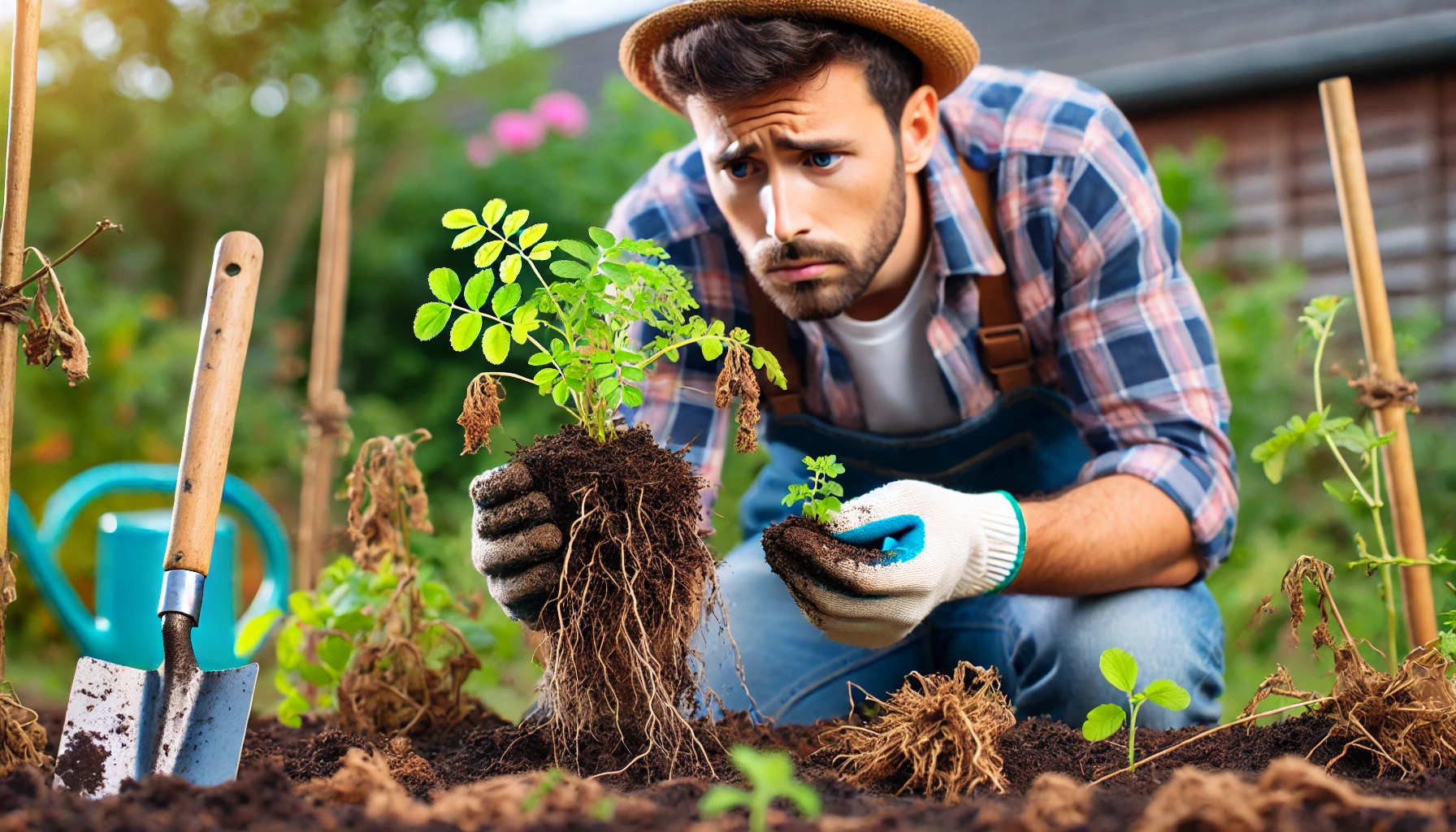
Using Soil with Poor Drainage
A common mistake is using garden soil, which often retains too much moisture, leading to root rot. Always opt for a medium that drains well to promote healthy root systems. A mix of perlite, sand, or vermiculite works best for most plants.
Overlooking Sterility
An unsterile medium can introduce pathogens that harm new roots. Always use a clean, sterile medium to avoid mold or fungal growth. This is especially crucial for seeds and cuttings.
Using a Single Medium for All Cuttings
While some mediums are versatile, not all are suited for every plant. For instance, woody cuttings might require a different mix than softwood cuttings. Avoid using a one-size-fits-all approach—tailor your medium to the specific cutting type.
Not Monitoring Moisture Levels
Over or underwatering the rooting medium is a common issue. The medium should be moist but not soggy. Keep an eye on the moisture level and adjust accordingly. A good rooting medium should retain just enough moisture to encourage root growth without causing stagnation.
Skipping the pH Check
The pH of your rooting medium matters. Some plants thrive in acidic mediums, while others prefer neutral or alkaline conditions. Always test the pH to ensure the best environment for your plant’s roots.
By avoiding these common mistakes, you set your plants up for strong, healthy growth right from the start. Choosing the correct rooting medium is key to successful propagation and flourishing plants.

Choosing the best medium for rooting cuttings is essential to ensuring your plant propagation efforts are successful. Whether you prefer the simplicity of water propagation or the reliable drainage of perlite and vermiculite, each medium has its unique benefits. By understanding the needs of your specific cuttings and selecting the right medium, you’ll set your plants up for strong, healthy root growth. Remember, experimentation is key—what works for one plant might not work for another. With the tips and mediums shared in this article, you’re now equipped to begin your propagation journey with confidence. Happy planting!
Frequently Asked Questions(FAQ)
What is the best medium for rooting cuttings?
The best medium for rooting cuttings depends on the type of plant you’re propagating. Common options include potting soil, perlite, coconut coir, vermiculite, and water. Each has its own benefits, with perlite and coconut coir offering excellent drainage and moisture retention, while water is perfect for some plants like pothos.
Can I use regular garden soil for rooting cuttings?
While regular garden soil can be used, it’s not ideal for rooting cuttings because it may not provide the proper drainage and aeration that roots need to grow. Potting mix or a blend of perlite and vermiculite is often better suited for rooting.
How does coconut coir help in rooting cuttings?
Coconut coir is an excellent medium for rooting cuttings because it is lightweight, retains moisture well, and provides good aeration for roots. It is also an environmentally friendly alternative to peat moss.
Can I propagate cuttings in just water?
Yes, many plants, such as pothos, philodendrons, and spider plants, can be propagated successfully in water. Simply place the cutting in a glass of water and change the water regularly until roots develop.
What is perlite and why is it good for rooting cuttings?
Perlite is a volcanic mineral that is light, porous, and improves soil drainage. When used as a medium for rooting cuttings, perlite helps prevent waterlogged conditions, providing the right balance of moisture and oxygen to encourage healthy root growth.
How do I know if my cutting has rooted successfully?
You can check if your cutting has rooted by gently tugging on the stem. If you feel resistance, it’s a sign that roots have formed. Another indicator is the presence of new growth on the cutting.
How often should I water my cuttings during propagation?
The frequency of watering depends on the medium you are using. Generally, keep the medium moist but not soggy. For mediums like perlite or coir, check regularly and water when they start to dry out. If propagating in water, ensure the water level is maintained and change it every few days.
Can I use a combination of mediums for rooting cuttings?
Yes, combining mediums can enhance the chances of successful rooting. For example, a mix of perlite and coconut coir provides a balanced environment with good drainage and moisture retention, which helps promote strong root growth.
